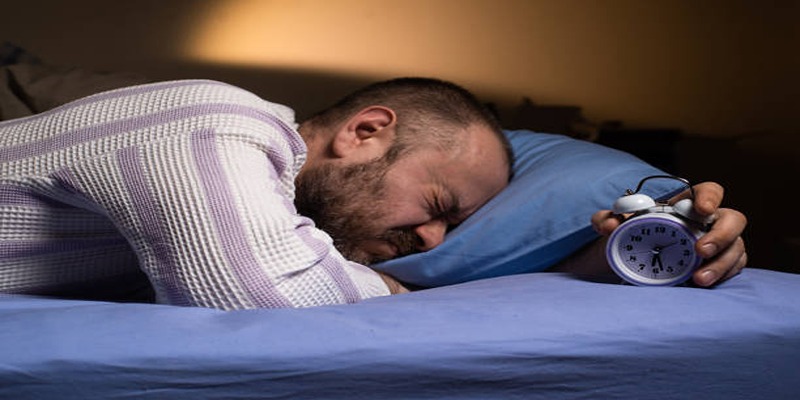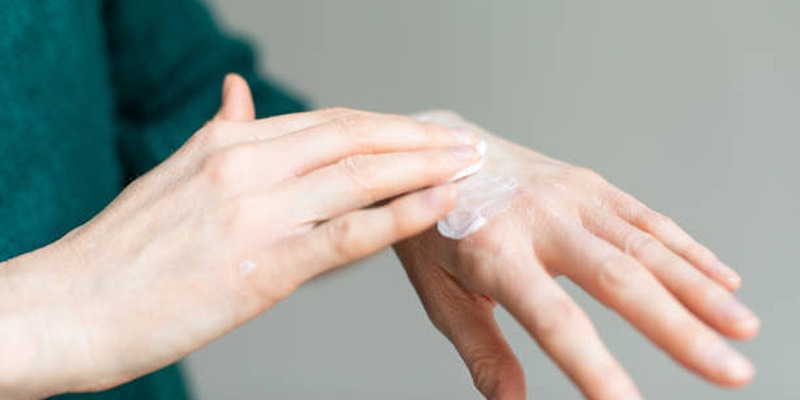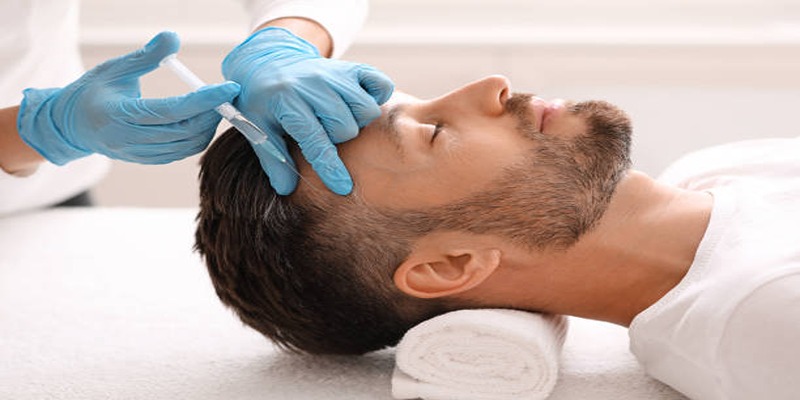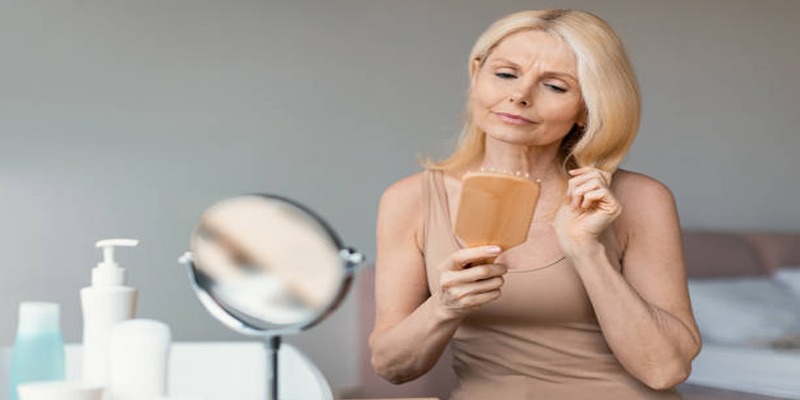Thinning Hair in Women Explained: Causes, Treatments, and Prevention
Advertisement
Thinning hair in women is a common concern that can affect self -confidence and welfare. This can be caused by factors such as hormonal changes, stress, genetics or underlying health conditions. Understanding the causes helps to detect effective treatment and prevention strategies, make women constantly address the problem and maintain healthy, live hair.
Understanding Thinning Hair in Women:
Thinning hair in women is a gradual process that is characterized by the density and volume of hair over time. This can affect the entire skull or concentrate in specific areas, such as crowns, hair lines or headheads. Many women look less complete for their hair, with a wide portion or more visible skull. Creating more hair on increased shed brash, shower or pillow can also be clear, and often exceeds the normal daily damage of 50-100 hair.
This condition can arise from a variety of factors, such as genetics, hormonal changes, stress, poor nutrition, or underlying medical conditions. Identifying the root cause is essential for finding the most effective treatment and restoring hair health.
Common Causes of Thinning Hair in Women:
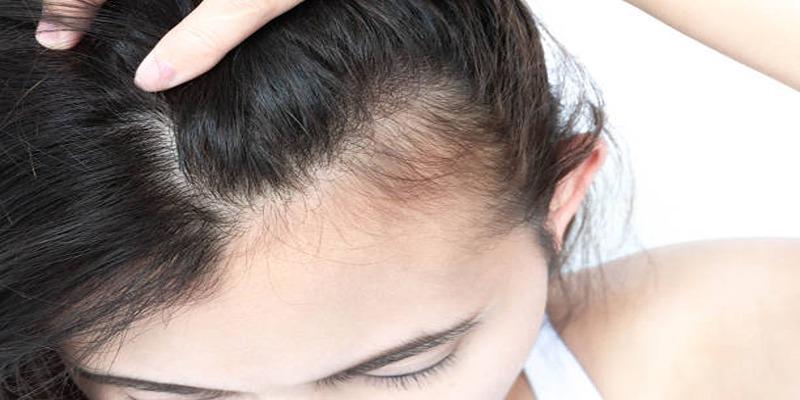
Thinning hair in women can stem from a variety of causes, ranging from genetic predispositions to lifestyle habits. Understanding the underlying issue is crucial for finding the right treatment. Below, we explore the most common factors behind hair thinning:
1. Hormonal Changes
Hormonal fluctuations are among the primary culprits of hair thinning in women. Life events such as pregnancy, menopause, and thyroid imbalances can disrupt the natural hair growth cycle. For example, during menopause, declining estrogen levels often result in increased hair shedding.
2. Genetics
Hereditary hair thinning, also known as androgenetic alopecia or female pattern hair loss, affects millions of women globally. This condition typically causes gradual thinning on the crown and top of the scalp.
3. Nutritional Deficiencies
Inadequate intake of vital nutrients, such as iron, vitamin D, and biotin, can weaken hair strands and contribute to thinning. Iron deficiency, in particular, is a common cause, as insufficient iron affects hemoglobin production—a key factor in delivering oxygen and nutrients to hair follicles.
4. Stress and Lifestyle Habits
Chronic stress, poor sleep, and unhealthy lifestyle choices can significantly impact hair health. Stress leads to elevated cortisol levels, which can disrupt the hair growth cycle, causing excessive shedding. Additionally, drastic weight loss or crash diets often deprive the body of essential nutrients, worsening hair thinning.
5. Hairstyling Habits That Harm Your Hair
Love your sleek ponytails, bouncy curls, or straightened locks? Be careful—frequent use of heat styling tools, tight hairstyles like braids and ponytails, or harsh chemical treatments can take a toll on your hair over time. These habits can weaken your hair follicles, causing breakage and, eventually, thinning. Treat your hair with care to keep it looking its best!
6. Medical Conditions and Medications
Underlying medical conditions, such as autoimmune diseases (e.g., alopecia areata) or scalp infections, can result in significant hair loss. Additionally, certain medications—including antidepressants, blood thinners, and chemotherapy drugs—list hair thinning as a possible side effect.
Effective Treatments for Thinning Hair:
Thinning hair can be distressing, but the good news is there are many effective treatments available. The best approach depends on the underlying cause and the severity of the condition. Here’s a breakdown of the most common and proven options:
1. Topical Treatments
Minoxidil, a popular over-the-counter solution, is one of the most effective treatments for thinning hair. Applied directly to the scalp, it works by stimulating hair follicles and encouraging regrowth. Consistent use is essential to maintain results over time.
2. Prescription Medications
For women experiencing hormonal imbalances, medications like spironolactone or finasteride may be recommended. These drugs help block DHT, a hormone known to shrink hair follicles, thereby preventing further thinning. These medications should always be taken under a doctor’s supervision.
3. Nutritional Supplements
Addressing nutrient deficiencies can play a crucial role in improving hair health. Supplements containing biotin, iron, zinc, and vitamins like D and E can strengthen hair and support growth. However, it’s wise to consult a healthcare provider before starting any supplement regimen.
4. Low-Level Laser Therapy (LLLT)
Say hello to hassle-free hair regrowth with Low-Level Laser Therapy! This non-invasive treatment uses red light to awaken dormant hair follicles, encouraging healthier, thicker hair. With easy-to-use devices like laser combs and helmets, you can enjoy salon-worthy results right from the comfort of your couch. Safe, convenient, and perfect for women ready to reclaim their confidence!
5. Platelet-Rich Plasma (PRP) Therapy
Imagine using your own body’s natural power to fight thinning hair! PRP therapy takes a small sample of your blood, concentrates the platelets—the healing superheroes—and injects them into your scalp. The result? Stimulated hair follicles, improved blood flow, and encouraged new growth. It’s an exciting, science-backed treatment that’s giving hope to those looking to restore their locks!
6. Hair Transplant Surgery
For advanced cases of thinning, hair transplant surgery may be a viable solution. This procedure involves transferring healthy hair follicles from a donor area to areas with thinning or baldness. While highly effective, it is also more invasive and comes with higher costs.
Tips to Prevent Thinning Hair:

Caring for your hair and adopting healthy habits can go a long way in preventing thinning. Here are some effective strategies to protect and nourish your locks:
1. Eat a Nutrient-Rich Diet
Healthy hair starts from within. Fuel your body with a balanced diet full of vitamins, minerals, and proteins. Include nutrient-packed foods like leafy greens, nuts, eggs, and fatty fish to provide your hair with the nourishment it needs to thrive.
2. Be Gentle with Hairstyling
Harsh styling can take a toll on your hair over time. Minimize the use of heat-styling tools and choose loose, gentle hairstyles that avoid pulling or straining your hair. When using chemical treatments, consult a professional to ensure minimal damage.
3. Reduce Stress Levels
Stress can disrupt the hair growth cycle, so incorporating calming activities into your routine is key. Whether it’s yoga, meditation, or regular exercise, finding ways to manage stress can support healthier hair.
4. Stay Hydrated
Hydration is essential for your overall health—and your hair is no exception. Drinking plenty of water helps keep your scalp moisturized and your hair strong and shiny.
5. Protect Against Environmental Damage
Your hair faces daily exposure to harmful UV rays, pollution, and harsh weather. Wear a hat or use protective hair products to shield your strands when spending time outdoors.
6. Care for Your Scalp
A healthy scalp is the cornerstone of strong, vibrant hair. Choose gentle shampoos and conditioners, and incorporate regular scalp massages to boost blood flow and promote growth.
Conclusion:
Thinning hair in women is a complex issue influenced by various factors, but it can be effectively addressed with the right approach. By identifying the underlying causes and taking proactive measures, women can manage hair loss while regaining confidence. From medical treatments and lifestyle adjustments to proper hair care routines, there are numerous strategies available to promote healthier, fuller hair. Ultimately, consulting a professional is essential to finding the most suitable solution for your individual needs.
On this page
Understanding Thinning Hair in Women: Common Causes of Thinning Hair in Women: 1. Hormonal Changes 2. Genetics 3. Nutritional Deficiencies 4. Stress and Lifestyle Habits 5. Hairstyling Habits That Harm Your Hair 6. Medical Conditions and Medications Effective Treatments for Thinning Hair: 1. Topical Treatments 2. Prescription Medications 3. Nutritional Supplements 4. Low-Level Laser Therapy (LLLT) 5. Platelet-Rich Plasma (PRP) Therapy 6. Hair Transplant Surgery Tips to Prevent Thinning Hair: 1. Eat a Nutrient-Rich Diet 2. Be Gentle with Hairstyling 3. Reduce Stress Levels 4. Stay Hydrated 5. Protect Against Environmental Damage 6. Care for Your Scalp Conclusion:Advertisement



